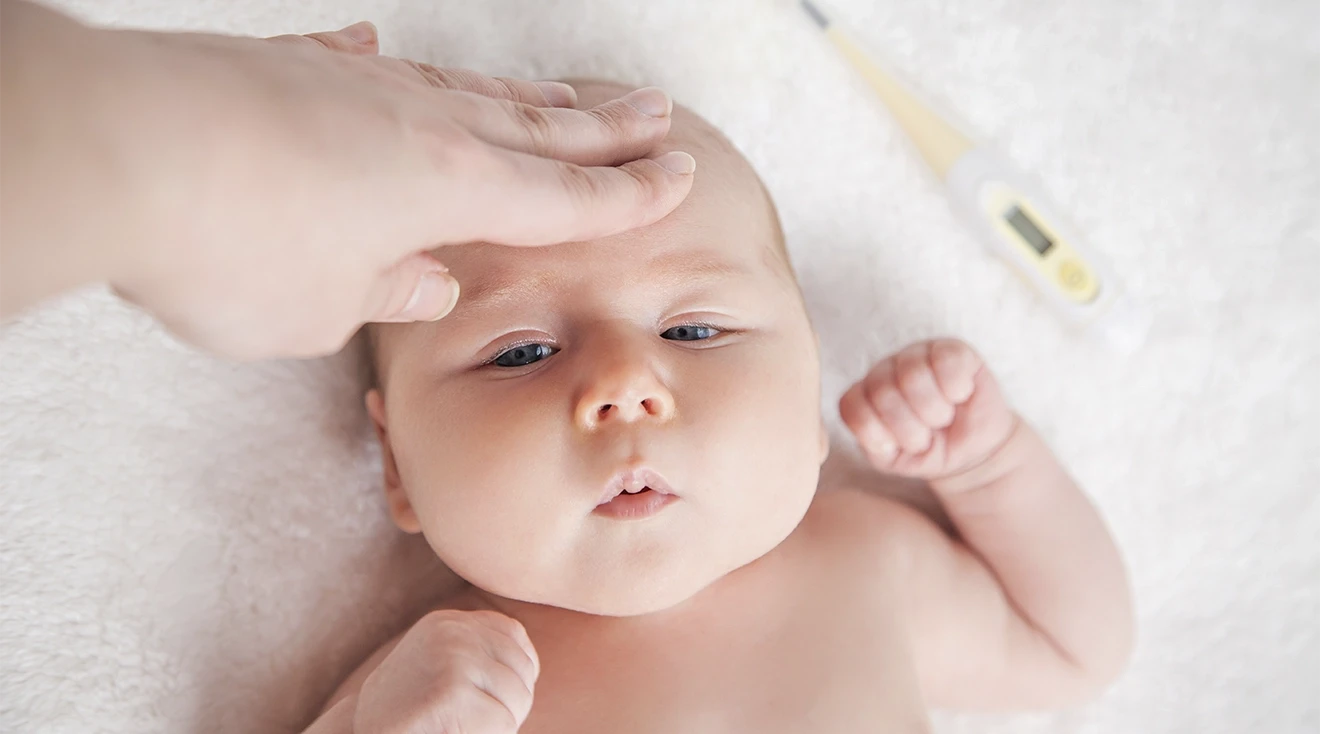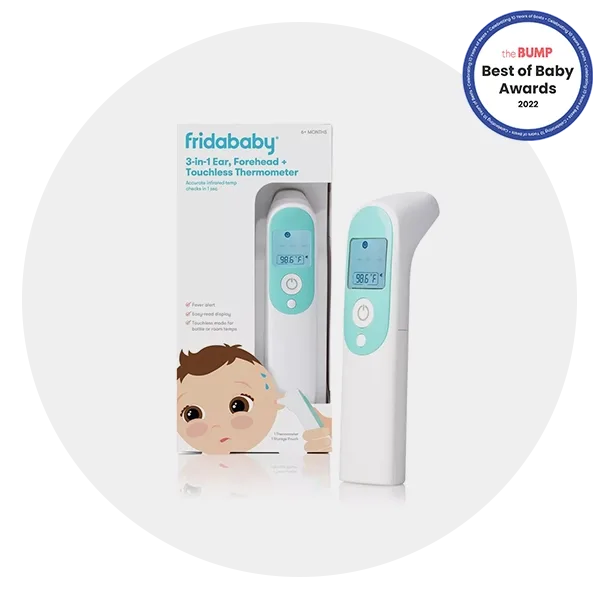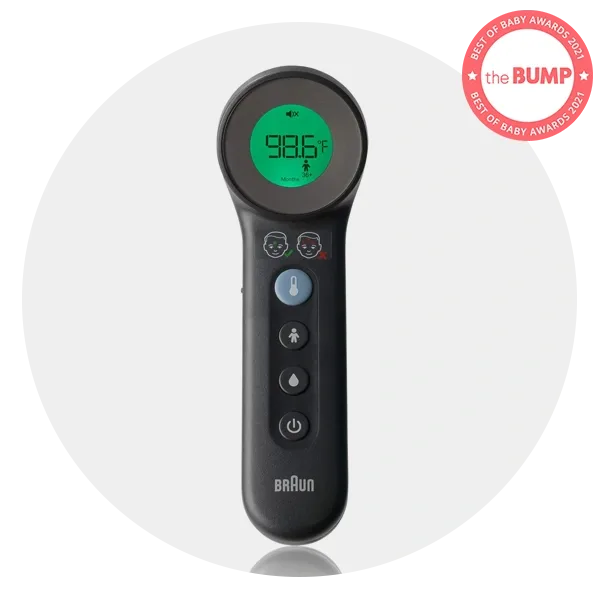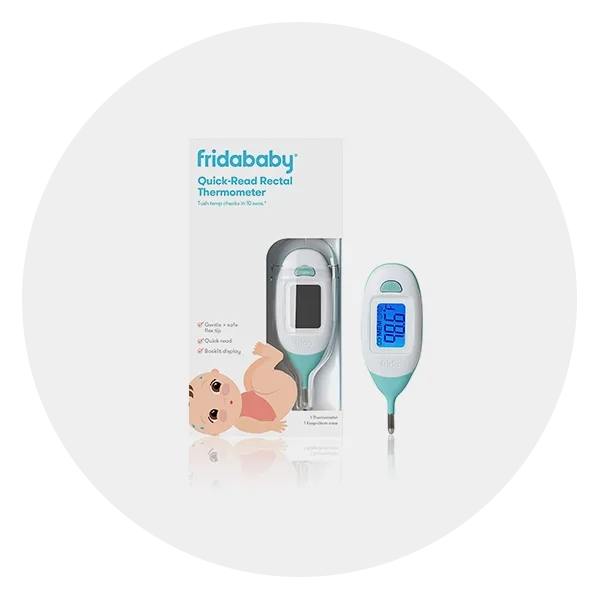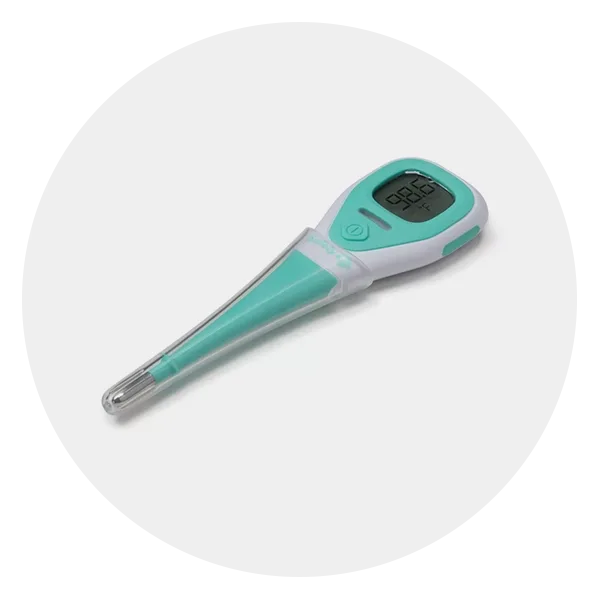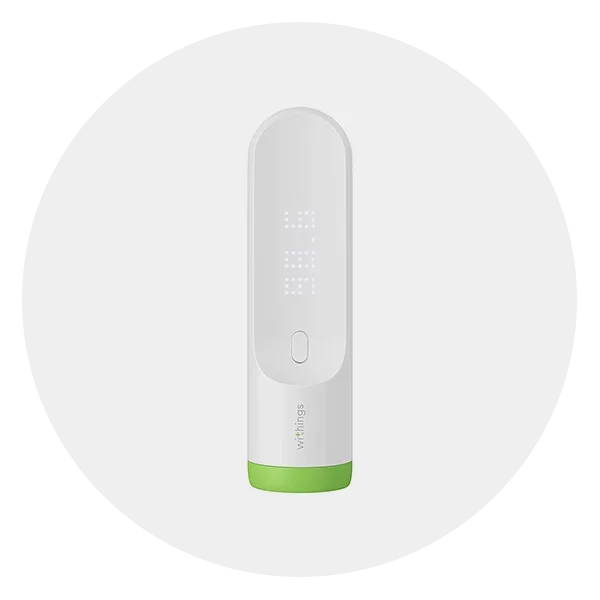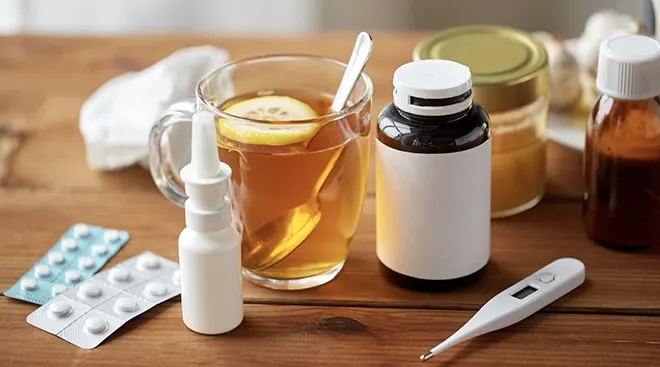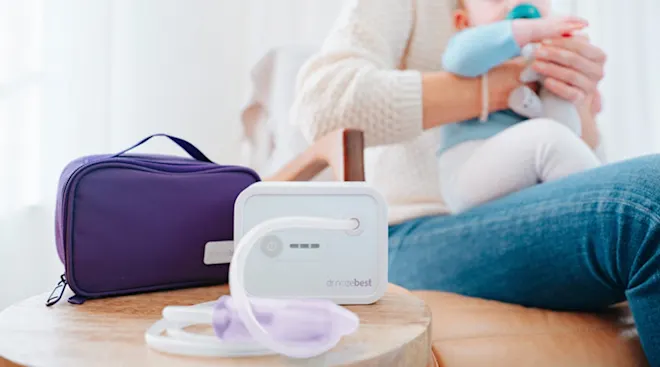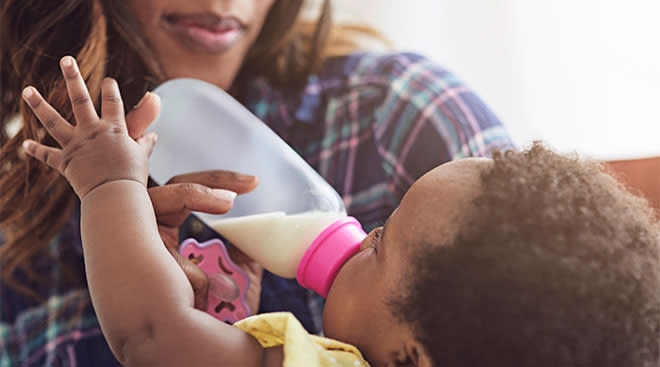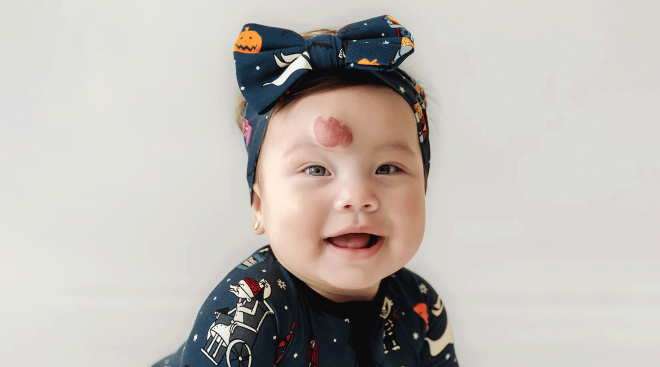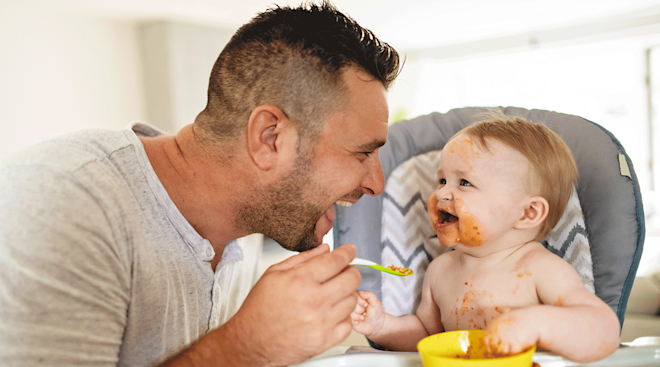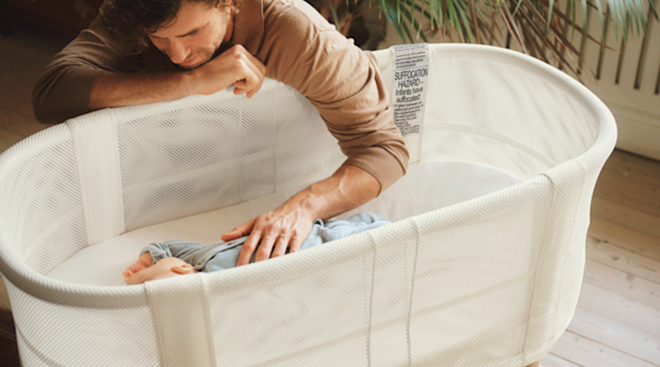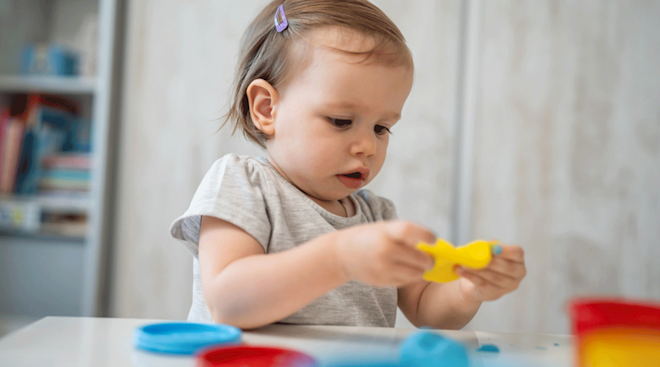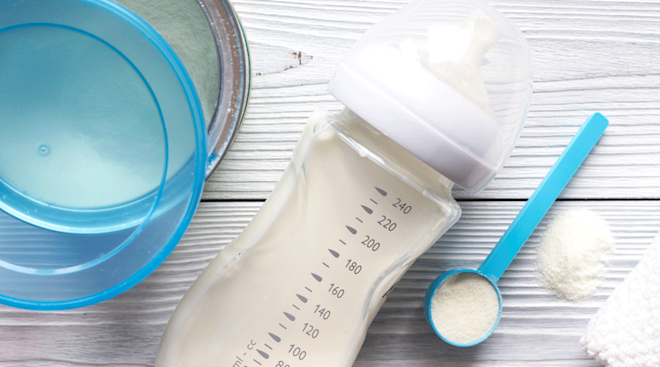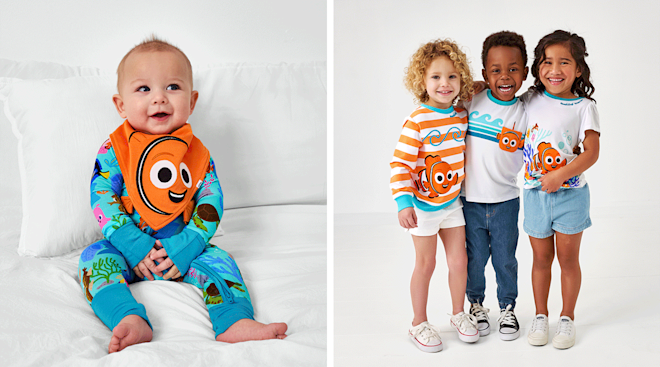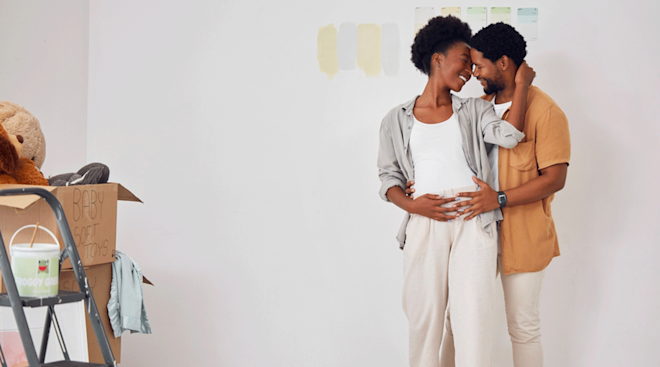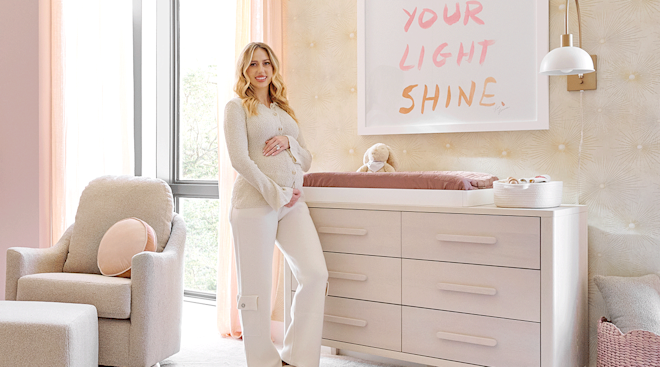The Heat Is on: the Best Baby Thermometers for Your Needs
It’s natural to be concerned about your child’s health—but a fever spike can send that worry into overdrive. A fever (any temperature over 100.4 degrees Fahrenheit) is often considered the first sign of illness, so monitoring your child’s temperature is critical to keeping tabs on their well-being. Since a hand-to-the-forehead isn’t necessarily known for its scientific accuracy, it’s important to have a baby thermometer you can trust.
But with so many different types of thermometers—oral, rectal, infrared and contactless—it’s not easy to find the right one for baby’s needs. Feeling overwhelmed? Don’t sweat it. We’re to help you find the best baby thermometer for your family. But, before you start browsing, read on for a breakdown of the different types of baby thermometers—plus, important safety tips to keep top of mind.
According to the American Academy of Pediatrics, there are three main types of digital thermometers to consider: multi-use, temporal artery (also known as forehead) and tympanic (also known as ear). The AAP recommends taking baby’s temperature rectally for the first three years, as it’s the most accurate method. Forehead thermometers are the next most accurate, followed by oral and ear. It’s most difficult to receive an accurate reading from the armpit. Here’s a deeper dive into the pros and cons of each type.
- Multi-use thermometers. While a digital multi-use thermometer has the ability to take rectal, oral or armpit temperatures, for hygiene reasons you should designate it for one selected area of the body. (Don’t forget to add a label that reads either “oral” or “rectal.”) According to the AAP, oral use isn’t recommended until a child is at least 4 years old. And, for accuracy’s sake, most pediatricians suggest taking rectal temps for babies and toddlers up to age 3. These thermometers typically take several seconds to record a temperature reading (making them one of the slower options), and they can be intimidating for parents to use—but when it comes to accuracy and affordability, these reign supreme.
- Temporal artery thermometers. A baby forehead thermometer works by using infrared sensors to measure heat coming off of the blood vessel that runs across the temporal artery in the forehead. These options can be used for all ages, and are favored by many for their quickness and ease-of-use. Most require just a quick swipe across the forehead or are no-contact, making them a hygienic and easy-to-clean option. However, it’s important to note that forehead thermometers can be affected by sunlight and air temperature, which can potentially lead to inaccurate readings.
- Tympanic thermometers. Baby ear thermometers (tympanic thermometers) work by measuring infrared heat waves coming off of the eardrum. They can be used on babies older than 6 months (younger babies’ ear canals are too narrow). To get an accurate reading, this type of thermometer must be placed correctly in a child’s ear canal. While easier to use than multi-use thermometers, ear thermometers can be affected by small ear canals, ear wax and cold air temperatures, making them less reliable than other methods.
No matter which type of thermometer you choose, it’s important to make sure you are using it correctly and safely. Here are some tips to keep in mind:
- Never use a mercury thermometer. The thin glass thermometers from your childhood pose a major health risk. The glass can break, and the mercury inside is highly poisonous. Always use a digital thermometer instead.
- Avoid pacifier thermometers. Pacifier options are not the most accurate baby thermometers, and they can take a long time—sometimes three to five minutes—to measure baby’s temperature. Also, poorly made pacifier thermometers can pose a choking hazard to baby.
- Use oral thermometers for older kids only. Oral thermometers are most suitable for children who are at least 4 years old and can keep the device firmly in their mouths.
- Keep your baby thermometer clean. Whether you choose an ear thermometer, a forehead thermometer or a rectal thermometer for baby, keep it clean. You don’t want your baby thermometer to reintroduce germs to your little one after they recover from an illness.
- Read the instructions first. For the most accurate measurements, read the instructions carefully before using a new thermometer to check baby’s temperature.
- Don’t leave baby alone. Never leave baby unattended while you’re checking their temperature.
Wondering if you need a specific baby thermometer, or if you can use the same one for the whole family? It depends. Most baby thermometers can also be used on adults, but the reverse isn’t always true. Baby multi-use and ear thermometers can sometimes be designed with smaller and narrower tips to accommodate a baby’s smaller features, both for comfort and accuracy purposes. Options designed specifically for older children and adults may be too large for babies and toddlers. The safest way to determine who can use a specific thermometer is to check the age range noted on the instructions—and always make sure to clean it between uses and users.
There are a few more things to consider before adding a new baby thermometer to your medicine cabinet. First, check how long it takes to get a temperature reading from a specific thermometer (seconds make a big difference when dealing with a fussy baby). Next, make sure it’s easy to read. The best baby thermometers have an illuminated LED display that’s easy to see, day or night. Be sure to check whether the thermometer is waterproof before cleaning it, as water damage can affect accuracy. And, finally, whether it’s a multi-use, forehead, or ear thermometer, make sure it’s FDA approved. Now that you’ve got the lowdown on what to look for, check out our favorite options across each category.
Best overall baby thermometer
- Stores up to 40 temperature readings
- In contactless mode, it can also be used to measure the temperature of baby’s bedroom or bottle
- Color-coded screen and optional sound alarm alert you when fevers spike
- High price point
- Not as accurate as a rectal thermometer
Voted the best baby thermometer in our annual Best of Baby awards, this pick by FridaBaby is hard to beat. The three-in-one design lets you take a reading from baby’s ear or forehead and it can also be used as a contactless infrared thermometer for big kids and adults. It takes an accurate reading in one second flat (literally) and the color-coded screen lets you know when baby’s fever is entering the danger zone. Plus, it stores up to temperature readings, so you won’t have to memorize everything ahead of your next doctor’s appointment.
Best contactless baby thermometer
- Non-invasive readings
- Color-coded display helps you understand the readings
- Age precision button lets you select the appropriate age setting for baby
- For an accurate reading, it must be held at the correct spot and distance, which can take some practice
- Batteries required
A thermometer that can do it all? Enter the Braun 3-in-1. Not only does it provide color-coded, age-specific temperature readings from up to one inch away (crucial for those middle-of-the-night readings), this baby thermometer can also be used to check the temp of bath water or food. Plus, each reading takes only two seconds. It’s no wonder this option is a Best of Baby 2021 winner.
Best rectal baby thermometer
- Light-up LED display
- Water-resistant for easy cleaning
- Memory stores up to 10 previous readings
- Some parents say that the battery can die quickly and without warning
As scary as it sounds, taking a rectal temperature provides the most accurate reading—especially in infants. Basically, a rectal reading is considered the gold standard among pediatricians. Making the process quick and painless for parents and baby is the FridaBaby Quick-Read Rectal Thermometer. A stopper design prevents you from inserting the thermometer too far (a common fear!), and readings only take 10 seconds. Plus, the large back-lit display makes temps easy to read (even in the middle of the night). Accurate and safe, this baby thermometer is among the best out there.
Best ear baby thermometer
- LED display
- One-second readings
- Log temperature readings, symptoms and medications using the app
- Ear probe must be cleaned with alcohol
- Some parents say that the probe is a bit large for younger children
Temperature readings in one second flat? With the Kinsa Smart Ear Thermometer, that’s a reality. But that’s not even the coolest feature on this clever thermometer. Bluetooth capability and a free app allow you to keep track of temperatures, symptoms, and medications, and the app provides real-time guidance on next steps to take (giving worried parents one less thing to think about). Another useful feature is the app allows you to check your local illness risk for viruses like the flu and Covid-19—or you can opt out of this feature if you’d prefer your information not be tracked.
Best affordable baby thermometer
- Affordable price point
- Can be used orally or rectally
- Flexible tip for comfort
- Display doesn’t light up, making it hard to read in the dark
This is a baby thermometer that gets the job done quickly and efficiently. The Safety 1st Rapid Read can be used orally, rectally or under the arm. And it provides temperature readings in just 8 seconds (and beeps when it’s ready). It may be no-frills, but with the price topping out at just $10—it can’t be beat.
Best digital baby thermometer
- Contactless and hygienic
- Color-coded fever indicator
- Extra-long battery life
- High price point
Contactless, accurate, easy-to-use—what more could you want out of a baby thermometer? The Withings Thermo Smart Temporal Thermometer provides all of that and more, making it easy to see why it’s a previous Best of Baby winner. Sixteen infrared sensors provide an accurate temperature reading instantly, with no contact required (meaning no cleaning necessary between uses). Readings automatically sync with the Thermo app, which in turn provides detailed medical advice and proper medication and dosage info (courtesy of Boston Children’s Hospital). It’s almost like having a nurse on call for your whole family.
If you suspect your little one has a fever you’ll want to act fast and take their temperature with a reliable thermometer. To help you find the best thermometer for your family’s needs, our goal is to do the bulk of the research for you, so you don’t have to spend hours scrolling through online retailers. We do this by considering a list of criteria including ease-of-use, value and accuracy.
To decide which baby thermometers are the best options on the market, we leverage our familiarity with leading brands to make sure items are from reliable manufacturers. We read user reviews to get the lowdown on how these products work for families, and typically don’t consider anything with less than an average four-star rating.
To make sure we’re highlighting thermometers that are age-appropriate and accurate, we consulted the American Academy of Pediatrics guidelines.
Interested in learning more about our editorial process? Read about how our team develops and reviews all articles here.
Please note: The Bump and the materials and information it contains are not intended to, and do not constitute, medical or other health advice or diagnosis and should not be used as such. You should always consult with a qualified physician or health professional about your specific circumstances.
Plus, more from The Bump:
Navigate forward to interact with the calendar and select a date. Press the question mark key to get the keyboard shortcuts for changing dates.

































